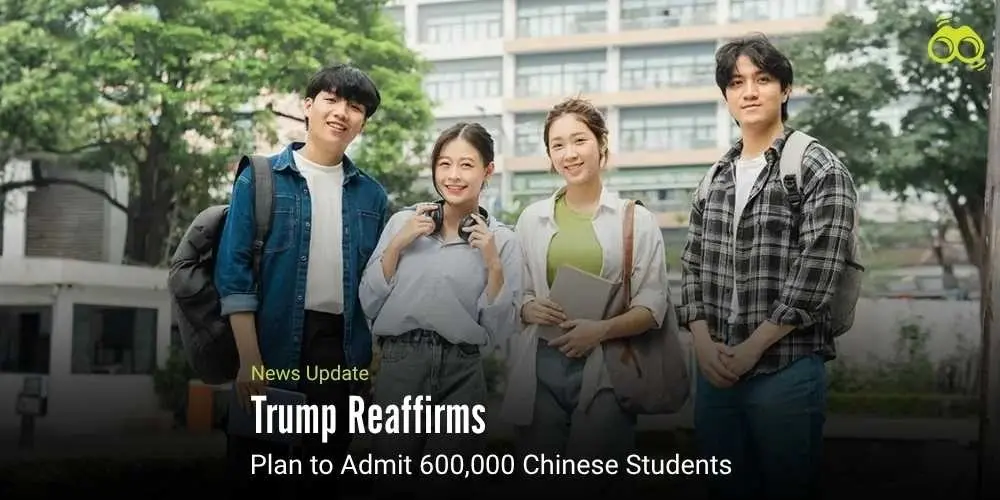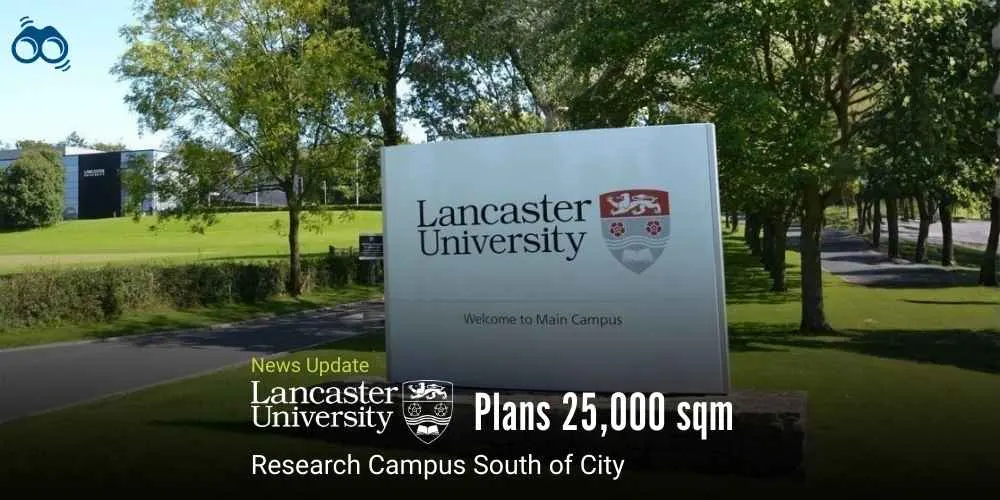Trump’s Education Strategy Sparks Debate Over U.S.–China Academic Relations
Plan to Admit 600,000 Chinese Students Divides MAGA Base and Republican Leaders
Donald Trump has reportedly redoubled his efforts to recruit over 600,000 Chinese students to American universities, a move that has caused division within his own political base. He reportedly brushed off criticism by claiming that he was the only one who truly understood what his supporters desired. Currently, American universities have 300,000 students from China. Trump's new plan will see this number double in two years through the new student visas granted to Chinese students. He specified that the intention behind the plan was to salvage “half the colleges in the United States” from collapsing, based on his claim that the higher education system relies on international enrolments. In that sense, the proposal was placed within a theme on the protection of U.S. universities financially.
When Laura Ingraham of Fox News asked him about the discontent among many of his supporters about his plan, he stated that historically black colleges and universities would also suffer from an America without international students. Ingraham complained that the country was getting increasingly dependent on China to sustain its university system, but Trump said that he wanted the country to "get along with the world." This is how he framed the program within the broader education relations of the U.S. and China.
Trump also turned his remarks against France, protesting against what he judged as a discriminatory tax imposed on American technology and goods. He refused to be accused of dividing the MAGA movement by his plan, insisting on the contrary that "MAGA was my idea" and that it is about making the country succeed. Critics, however, claim that the plan runs counter to his "America First" slogan, thereby increasing the strains within his political base. Florida Governor Ron DeSantis was said to have lambasted the plan, warning that many Chinese students were connected to the Chinese Communist Party; he asked why America should import foreign workers when it had its own citizens to support. Similarly, Marjorie Taylor Greene maintained that Chinese students would fill places that could have gone to American students. In this manner, Republican opposition became stiffer.
Other lawmakers also raised concerns. Rep. Mark Harris indicated that a lot of the world needs to recognise that China is really one of its top foreign adversaries and that hence, caution ought to be shown to it. He added that studying in America was not a right but a privilege and that in recent cases, students had developed some rather anti-American views. Michal Sobolik of the Hudson Institute added that Chinese students are used to stealing American research, considering that universities depend largely on foreign tuition. Thus, national security has become a matter of discussion in this regard. Those supporting the plan emphasised its economic advantages. Cato Institute research predicts that admitting 600,000 Chinese students could have a direct financial impact of $32.1 billion on U.S. universities. The advocates feel that fears of espionage are exaggerated, pointing out that this policy would strengthen international students' opportunities in higher education. Proponents hope to achieve this objective by stabilising the U.S. higher education system while being globally competitive.
Editor’s Note:
Donald Trump promises to double the number of Chinese students coming to study in universities in the USA to 600,000. This is not simply a public education policy but an aggressive move created through politics and exposing the standpoint between economic issues and national security. On one side, it shows the economic fragility of the U.S. higher education system, which has become entirely dependent on foreign students in America, since it is used to sustain itself. Thus, Trump formulates the argument concerning his policy as a way to prevent "half the colleges" from collapsing, thus placing the entire debate squarely around institutional survival. However, the counterattack it fuels from within his own political base shows the internal contradictions of this strategy. Because critics condemn the plan for being contrary to the promise of an "America First" agenda and sow fears that Chinese students might seize seats or even engage in espionage and lobbying by the Chinese Communist Party, people like Ron DeSantis and Marjorie Taylor Greene have fanned these fears by claiming that it brings foreign talent over Americans first. In this sense, the issue has also become an issue of loyalty within the Republican ranks. Supporters of this policy, however, cite economic benefits tied to it. The Cato Institute estimates the direct effect on the economy at $32.1 billion; of course, that figure cannot be dismissed under the currently strained budgets of universities. Advocates argue that the fears of espionage are inflated and that expanding international student visa policy in the U.S. programs would actually result in greater competitiveness at the global level. In this respect, the debate reflects a more significant question of U.S.-China education relations and the balance between openness and caution in the regulatory context.
Skoobuzz underscores that the controversy exposes the dual nature of international students: a lifeline for financially fragile universities and a lightning rod for national political anxieties. Trump's plan confronts the nation with the prime question of whether higher education is primarily an economic enterprise or a matter of national security. The answer will have much to do with the future of higher education opportunities for international students and America's place in global academic collaboration.
FAQs
Q1. What is Trump’s plan to admit 600,000 Chinese students to the U.S.?
Donald Trump has proposed doubling the number of Chinese students in U.S. universities from 300,000 to 600,000 over the next two years by expanding student visa opportunities.
Q2. How many Chinese students are currently studying in American universities?
At present, around 300,000 Chinese students are enrolled in American universities, making them one of the largest groups of international students in America.
Q3. Why does Trump want to increase student visas for Chinese students?
He explained that the plan was intended to prevent “half the colleges in the United States” from closing, arguing that the U.S. higher education system relies heavily on international enrolments for financial stability.
Q4. How has Trump defended his plan against criticism?
Trump insisted that he understood his supporters better than anyone else and claimed that historically Black colleges and universities would struggle without international students. He also said he wanted America to “get along with the world.”
Q5. What concerns have critics raised about the plan?
Critics, including Florida Governor Ron DeSantis and Marjorie Taylor Greene, warned that many Chinese students could be linked to the Chinese Communist Party, replace opportunities for American students, or pose national security risks.
Q6. What did other lawmakers say about the proposal?
Representative Mark Harris argued that caution was needed when dealing with China, describing it as a top foreign adversary. Analysts such as Michal Sobolik claimed that Chinese students were being used to steal American research, pointing to universities’ reliance on foreign tuition fees.
Q7. How does Trump’s plan affect U.S.–China education relations?
The proposal places the debate within the broader context of the U.S.–China education relations, highlighting both the opportunities of international collaboration and the risks of dependence on Chinese enrolments.
Q8. What financial benefits are expected from the plan?
Supporters, including researchers from the Cato Institute, estimated that admitting 600,000 Chinese students could generate a direct financial impact of $32.1 billion for American universities.
Q9. How will Trump’s education plan affect international student enrolment?
If implemented, the plan would significantly increase higher education opportunities for international students, making Chinese students the largest group in U.S. universities and reshaping global recruitment trends.
Q10. What is the wider debate around international student visa policy in the U.S.?
The controversy reflects a tension between economic benefits and national security concerns. While universities see international students as vital for financial survival, critics argue that the international student visa policy in the U.S. must be carefully managed to protect research and domestic opportunities.














0 Comments (Please Login To Continue)